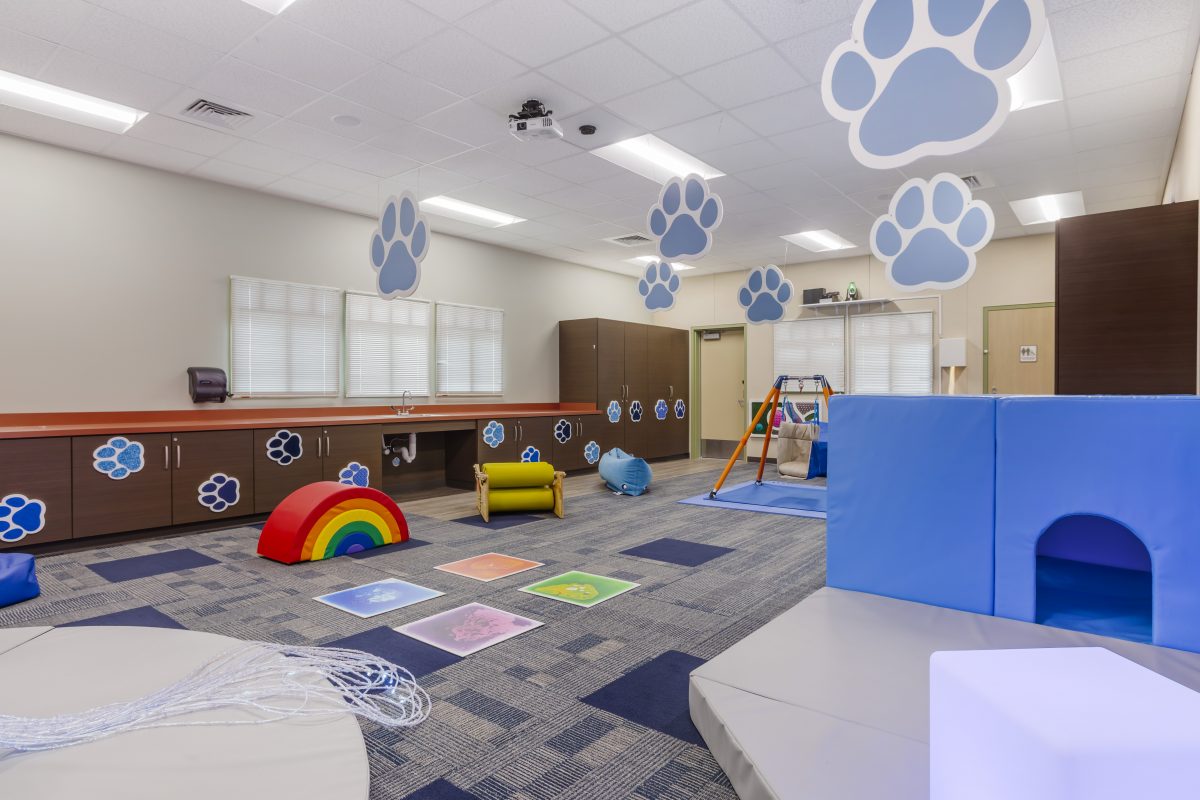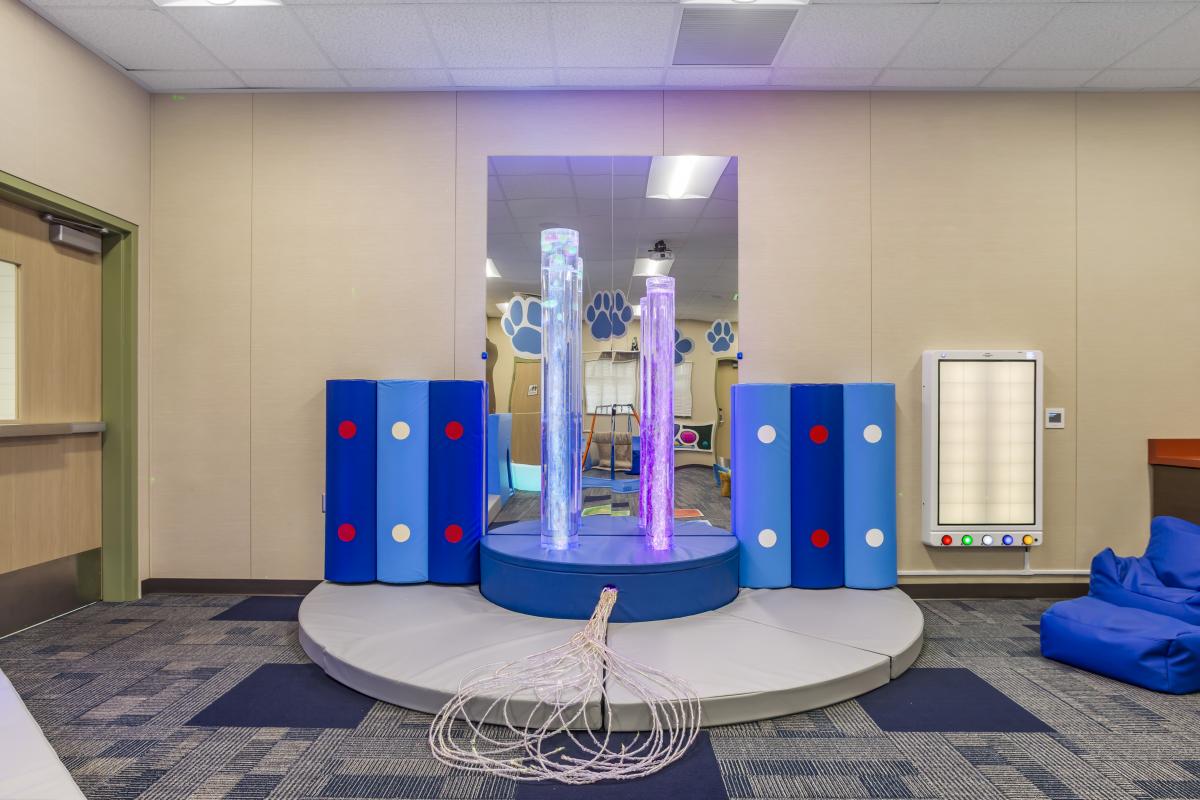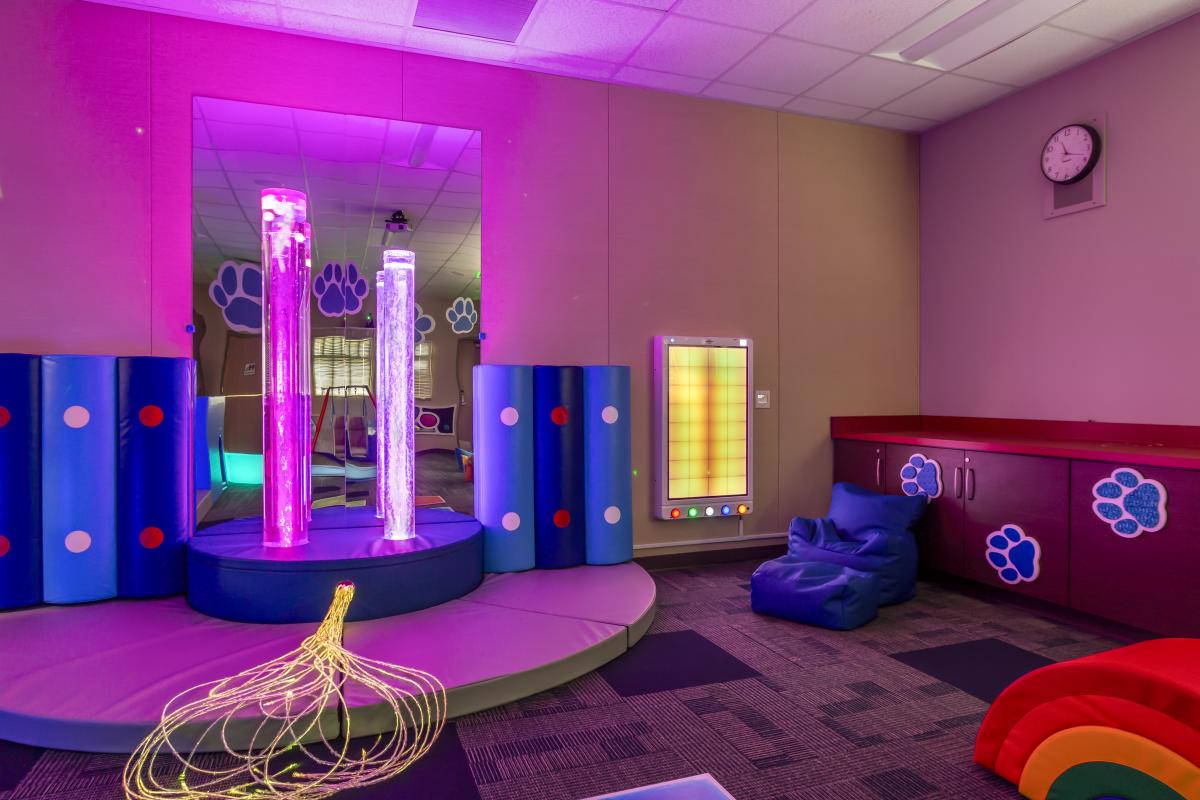Paso Robles Joint Unified School District, a school system with about 6,000 students in California’s Central Coast region, is working hard to overcome barriers to students’ learning—and a new Snoezelen® multi-sensory room at the Marie Bauer Early Education Center will help the district achieve this goal.
Designed with the help of School Specialty learning environment specialists, the space includes special furniture and equipment to help all students—but especially those with sensory processing issues— to control their environment and regulate their emotions so they’re able to learn more effectively.
“We found that certain students, after spending time on the playground, had trouble regulating their bodies to sit still for regular instruction,” said Heather Wahlberg, the center’s director. “Along with our teachers and occupational therapists, we wanted to provide more support for those students and teach them self-regulation skills so they could learn alongside their peers in the classroom.”
Using money from a state grant initiative called the Inclusive Early Education Expansion Program, or IEEEP, the district decided to create a Snoezelen multisensory environment within its early education center. Typically featuring gentle lighting, soothing sounds, and calming textures, Snoezelen rooms are relaxing spaces that help reduce anxiety, but they also engage and stimulate users with sensory inputs designed to promote independence by giving children a sense of control over their environment.
Paso Robles occupational therapists and other interventionists identified their goals for the space, based on the sensory needs of their student population. Then, they evaluated a number of vendors to find a partner who could help them execute their vision.
With a team of Snoezelen and sensory environment specialists on staff, School Specialty emerged as the clear choice. “Their ability to understand our mission and vision was second to none,” Wahlberg said. “We realized we’d found a partner to help us turn our vision into a reality.”


Goals for the Snoezelen Environment
Paso Robles serves many children on the autism spectrum who have very different sensory needs.
“Some of them are underresponsive to stimuli and seek out more sensory input,” said occupational therapist Kerry Schmidt, “while others are overresponsive—and being in a regular classroom can be overstimulating for them.”
District leaders wanted to create a versatile multisensory environment that could adapt to what students required, with sensory furniture and equipment that catered to each of these needs. “We wanted the room to be very intentional,” Wahlberg said, “and not just used for kids to take a break. We already had other spaces for that, where kids can climb or play as needed.”
Wahlberg and her colleagues wanted a space where staff could lead students in the intentional use of equipment for self-regulating activities based on their specific needs, so that after only five or ten minutes in the room, they were ready to rejoin their peers for general instruction. “We wanted to maximize students’ time in class,” she explained.
School Specialty Account Managers Lexi Levanduski and Alessandra Pucci worked with district leaders to design an environment that was well-suited to their requirements.
The project was facilitated by School Specialty Learning Environment Specialist Ken Mueller, who served as a liaison between the district and the design team. “It was really a team approach,” Mueller said. “Everyone did what they needed to make this a successful project.”
Features such as bubble tubes with colored lights, a platform swing for vestibular input, pressure rollers for proprioceptive input, and a musical positioning cushion that gives children a vibroacoustic experience by surrounding them with comfort, sound, and subtle vibrations when they sink into the cushion help students who are sensory seekers. Interactive panels that respond when children touch them help them learn cause and effect while exerting control over their environment.
Mellow music and slowly rocking on the platform swing help calm overstimulated children. “We picked an array of products that would benefit a wide range of students and needs,” Pucci said, “so no matter who was using the room, there was an area for each type of student.”


Setting Students Up for Success
One of the key design challenges the School Specialty team faced was the presence of built-in cabinets within the room that couldn’t be moved. However, the design team turned this obstacle into an advantage by using the cabinets to create a ‘lending library’ of sensory materials that teachers could borrow for use in their classrooms. The cabinets also doubled as a tactile wall, with each paw print custom-made to feature different textures—providing students with another meaningful sensory experience.
These items include gross motor equipment for teachers to create an obstacle course within their classroom; fine motor tools such as adaptive crayons, paint brushes, and scissors for children who struggle with fine motor skills; and adaptive communication tools.
With the lending library, “teachers can check out items to meet students’ needs where they are,” Wahlberg noted.
The Snoezelen sensory room was completed in February 2025, and already Wahlberg and her colleagues have noticed an impact. Having an intentionally designed space to bring students when they need help in self-regulating reduces the amount of time they can’t focus on instruction.
“Regulation is so important not just for students with disabilities, but for all students,” Wahlberg concluded. “We’re trying to teach students these skills that serve as a foundation for learning.” With the new Snoezelen multisensory environment, “we’ve seen a lot of success in a short amount of time. After only a few minutes in this room, students return to the classroom ready to learn. We’re setting them up for success in the classroom.”
Creating a sensory space in your school actually helps support students in spending more instructional time in class. A well-equipped multisensory room allows students to hone in on the exact type of self-regulation or stimulation they need, which also enables them to get back to class in less time. Discover how to design a multisensory space tailored to your school’s specific needs with the help of our Inspiration Gallery.